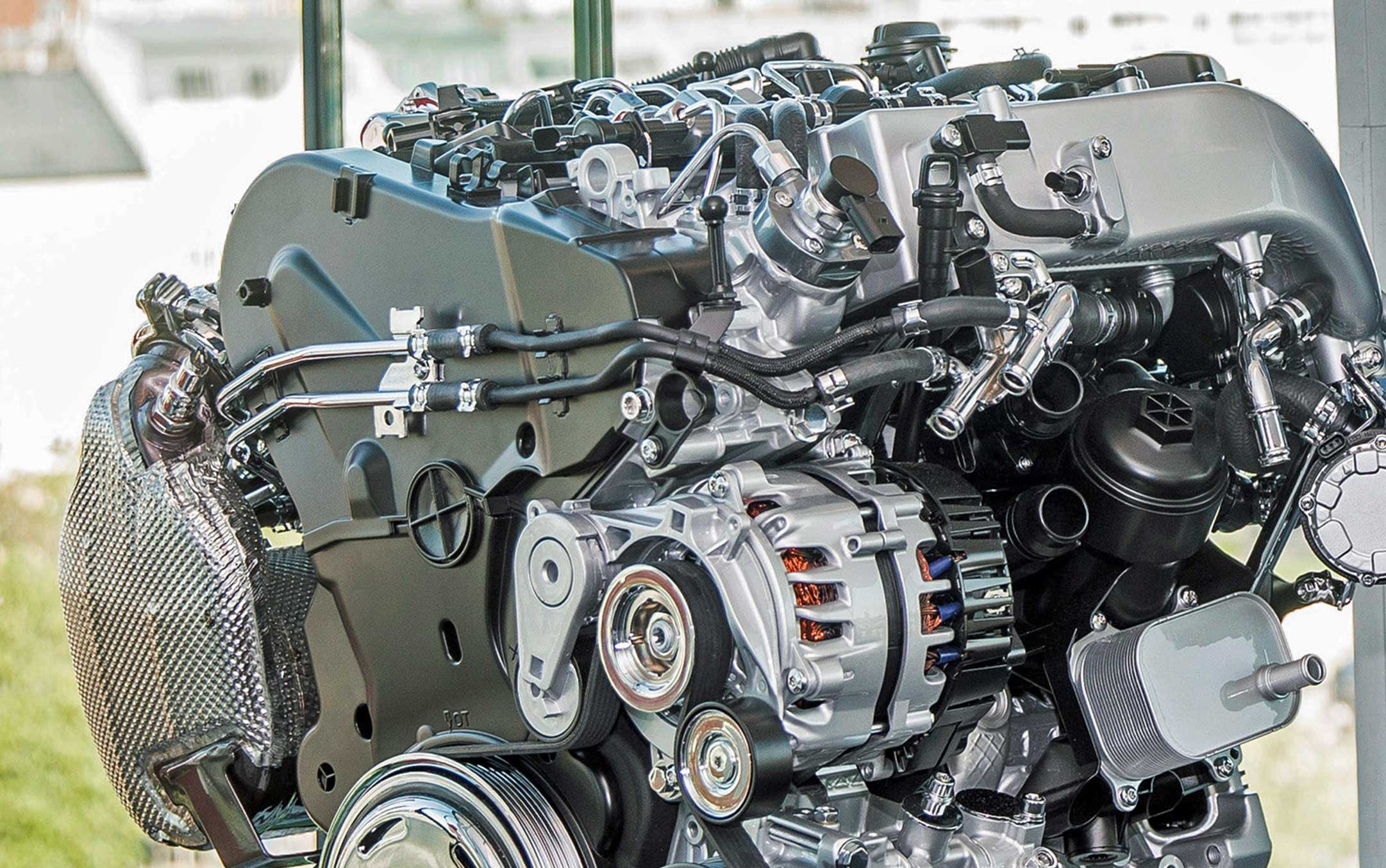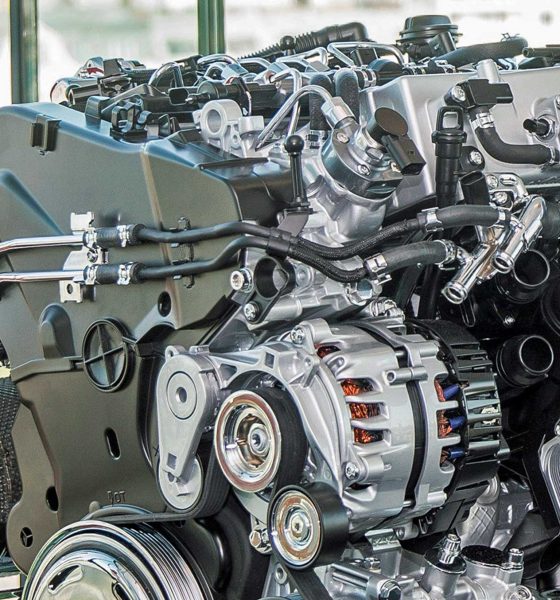

News
Volkswagen exec reaffirms commitment to diesel: ‘Now it is absolutely clean’
Recent comments from a Volkswagen executive suggests that the German automaker is not yet ready to fully let go of diesel-powered vehicles. The comments, which were related by Sebastian Willmann, Head of Diesel Engine Development at VW, were published by the veteran carmaker in a blog post promoting its 2.0 TDI EA288 Evo diesel engine, which is designed to meet the strict Euro 6d-Temp standard.
During his interview, Willmann highlighted the importance of diesel engines to Volkswagen’s lineup. The executive mentioned that diesels remain popular among car buyers due to their longevity, helping vehicles’ mileages reach between 400,000 to 500,000 kilometers (248,000 to 310,000 miles). Willmann also explained that Volkswagen’s new diesel engine is aimed at reducing CO2 emissions.
“We were able to reduce consumption by up to 10 g CO2/km or about 0.4 l/100 km compared to the already very efficient predecessor engine – and still increase its output. This is a significant step forward while reducing emissions,” he said.
Addressing what could be described as a stigma surrounding diesel engines following Volkswagen’s high-profile Dieselgate scandal, the executive affirmed that diesels will continue to be part of the automaker’s brand in the future. Willmann mentioned that diesel propulsion will remain particularly effective among heavy vehicles that require long range and lots of torque.
“Diesel has always been very economical and now it is absolutely clean. Vehicles with the latest emission technology, such as our current diesel engines, emit only very low nitrogen oxide emissions. Our models are at the level of the best competitors… Especially in heavier vehicles, where large ranges and a lot of torque are required and possibly even a trailer to be pulled, the diesel is still the most efficient drive today,” he said.
The comments of the Volkswagen executive stand in contrast to the current stance of Porsche, an automaker that belongs to the Volkswagen group. Last September, Porsche CEO Oliver Blume announced that the veteran sports car maker is abandoning its entire diesel lineup. While Blume argued that the move is in no way intended to demonize diesel, the CEO stated that it was time for Porsche’s future to be “diesel-free.” The automaker has since doubled down on its electrified and electric vehicle programs, with EVs such as the highly-anticipated Porsche Taycan set to be unveiled this coming September.
Volkswagen CEO Herbert Diess, for his part, has taken a positive stance on the electric car revolution. Last March, reports from Germany emerged stating that Diess, together with the CEOs of rivals Daimler and BMW, have agreed that the future of Das Auto is the electric car. Volkswagen has since unveiled its first all-electric car, the ID.3, which is expected to be priced below 40,000 euros ($45,000) in Germany. Seemingly as confirmation of market’s interest in electric vehicles, the ID.3 was met with much enthusiasm from the EV community. Over the first 24 hours of the ID.3’s unveiling, Volkswagen revealed that it received 10,000 pre-orders for the vehicle.

News
Tesla starts showing how FSD will change lives in Europe
Local officials tested the system on narrow country roads and were impressed by FSD’s smooth, human-like driving, with some calling the service a game-changer for everyday life in areas that are far from urban centers.

Tesla has launched Europe’s first public shuttle service using Full Self-Driving (Supervised) in the rural Eifelkreis Bitburg-Prüm region of Germany, demonstrating how the technology can restore independence and mobility for people who struggle with limited transport options.
Local officials tested the system on narrow country roads and were impressed by FSD’s smooth, human-like driving, with some calling the service a game-changer for everyday life in areas that are far from urban centers.
Officials see real impact on rural residents
Arzfeld Mayor Johannes Kuhl and District Administrator Andreas Kruppert personally tested the Tesla shuttle service. This allowed them to see just how well FSD navigated winding lanes and rural roads confidently. Kruppert said, “Autonomous driving sounds like science fiction to many, but we simply see here that it works totally well in rural regions too.” Kuhl, for his part, also noted that FSD “feels like a very experienced driver.”
The pilot complements the area’s “Citizen Bus” program, which provides on-demand rides for elderly residents who can no longer drive themselves. Tesla Europe shared a video of a demonstration of the service, highlighting how FSD gives people their freedom back, even in places where public transport is not as prevalent.
What the Ministry for Economic Affairs and Transport says
Rhineland-Palatinate’s Minister Daniela Schmitt supported the project, praising the collaboration that made this “first of its kind in Europe” possible. As per the ministry, the rural rollout for the service shows FSD’s potential beyond major cities, and it delivers tangible benefits like grocery runs, doctor visits, and social connections for isolated residents.
“Reliable and flexible mobility is especially vital in rural areas. With the launch of a shuttle service using self-driving vehicles (FSD supervised) by Tesla in the Eifelkreis Bitburg-Prüm, an innovative pilot project is now getting underway that complements local community bus services. It is the first project of its kind in Europe.
“The result is a real gain for rural mobility: greater accessibility, more flexibility and tangible benefits for everyday life. A strong signal for innovation, cooperation and future-oriented mobility beyond urban centers,” the ministry wrote in a LinkedIn post.
News
Tesla China quietly posts Robotaxi-related job listing
Tesla China is currently seeking a Low Voltage Electrical Engineer to work on circuit board design for the company’s autonomous vehicles.

Tesla has posted a new job listing in Shanghai explicitly tied to its Robotaxi program, fueling speculation that the company is preparing to launch its dedicated autonomous ride-hailing service in China.
As noted in the listing, Tesla China is currently seeking a Low Voltage Electrical Engineer to work on circuit board design for the company’s autonomous vehicles.
Robotaxi-specific role
The listing, which was shared on social media platform X by industry watcher @tslaming, suggested that Tesla China is looking to fill the role urgently. The job listing itself specifically mentions that the person hired for the role will be working on the Low Voltage Hardware team, which would design the circuit boards that would serve as the nervous system of the Robotaxi.
Key tasks for the role, as indicated in the job listing, include collaboration with PCB layout, firmware, mechanical, program management, and validation teams, among other responsibilities. The role is based in Shanghai.
China Robotaxi launch
China represents a massive potential market for robotaxis, with its dense urban centers and supportive policies in select cities. Tesla has limited permission to roll out FSD in the country, though despite this, its vehicles have been hailed as among the best in the market when it comes to autonomous features. So far, at least, it appears that China supports Tesla’s FSD and Robotaxi rollout.
This was hinted at in November, when Tesla brought the Cybercab to the 8th China International Import Expo (CIIE) in Shanghai, marking the first time that the autonomous two-seater was brought to the Asia-Pacific region. The vehicle, despite not having a release date in China, received a significant amount of interest among the event’s attendees.
Elon Musk
Elon Musk and Tesla AI Director share insights after empty driver seat Robotaxi rides
The executives’ unoccupied tests hint at the rapid progress of Tesla’s unsupervised Robotaxi efforts.

Tesla CEO Elon Musk and AI Director Ashok Elluswamy celebrated Christmas Eve by sharing personal experiences with Robotaxi vehicles that had no safety monitor or occupant in the driver’s seat. Musk described the system’s “perfect driving” around Austin, while Elluswamy posted video from the back seat, calling it “an amazing experience.”
The executives’ unoccupied tests hint at the rapid progress of Tesla’s unsupervised Robotaxi efforts.
Elon and Ashok’s firsthand Robotaxi insights
Prior to Musk and the Tesla AI Director’s posts, sightings of unmanned Teslas navigating public roads were widely shared on social media. One such vehicle was spotted in Austin, Texas, which Elon Musk acknowleged by stating that “Testing is underway with no occupants in the car.”
Based on his Christmas Eve post, Musk seemed to have tested an unmanned Tesla himself. “A Tesla with no safety monitor in the car and me sitting in the passenger seat took me all around Austin on Sunday with perfect driving,” Musk wrote in his post.
Elluswamy responded with a 2-minute video showing himself in the rear of an unmanned Tesla. The video featured the vehicle’s empty front seats, as well as its smooth handling through real-world traffic. He captioned his video with the words, “It’s an amazing experience!”
Towards Unsupervised operations
During an xAI Hackathon earlier this month, Elon Musk mentioned that Tesla owed be removing Safety Monitors from its Robotaxis in Austin in just three weeks. “Unsupervised is pretty much solved at this point. So there will be Tesla Robotaxis operating in Austin with no one in them. Not even anyone in the passenger seat in about three weeks,” he said. Musk echoed similar estimates at the 2025 Annual Shareholder Meeting and the Q3 2025 earnings call.
Considering the insights that were posted Musk and Elluswamy, it does appear that Tesla is working hard towards operating its Robotaxis with no safety monitors. This is quite impressive considering that the service was launched just earlier this year.








